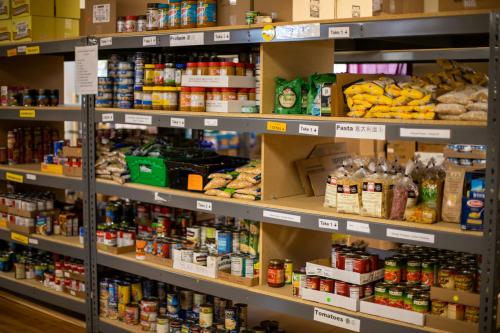The index measures year-on-year change, building on the UKFSR evidence base but also taking into account wider intelligence and forecasts, and policy developments. In contrast with the common use of the term, the index is not presented as a single number but it comprises 9 separate indicators across a range of areas.
The 9 indicators and their assessment (in parenthesis) are:
- Indicator 1: Global food supply for human consumption (broadly stable);
- Indicator 2: Share of global cereals and soyabeans internationally traded (broadly stable
- Indicator 3: Production-supply ratio (broadly stable)
- Indicator 4: Agricultural total factor productivity (some reduction in risks)
- Indicator 5: Agricultural land use (broadly stable)
- Indicator 6: Energy and fertiliser prices (some reduction in risks)
- Indicator 7: Business investment (broadly stable)
- Indicator 8: Biosecurity risk (broadly stable)
- Indicator 9: Consumer confidence in food supply chain actors (broadly stable)
According to the release, the 9 indicators are affected by a number of factors such as supply, demand, international and domestic trends, inputs and outputs, perception of food safety and consumer confidence. Moreover, the assessment of food security is an overall qualitative assessment based on the combination of the direction of travel of each of the indicators in the index, as compared to the previous year, with the baseline in future years set by the previous index.
Whilst commendable as it brings to the front of the discussion an important topic, the index focuses heavily on the “supply side” of food security, i.e., production and factors affecting it, with indicator 9 being the only one where consumers are considered. In fact, 8 out of 9 refer to the so-called food security dimension ‘availability’. This leaves aside other important dimensions such as physical and economic accessibility (also called affordability), utilisation and stability.
Moreover, is not clear whether the index refers specifically to the UK food security because when referring to the “demand side” the release focuses on global (i.e., world) demand. Thus, it states: “there is enough food available to feed the current global population (2978 kcals per person per day which exceeds the recommended average of 2500 kcal for men and 2000 kcal for women).”
In contrast with the focus of the index (i.e., production and its factor), it would have been better something closer to the definition of food security, which focuses on the situation of individuals, i.e., according to the well-known and used definition from FAO “food security exists when all people, at all times, have physical, social and economic access to sufficient, safe and nutritious food which meets their dietary needs and food preferences for an active and healthy life”.
It would also have been important to consider as part of the index indicators of food insecurity (there are several examples available e.g., Food Insecurity Experience Scale). This is because one of the uses of an indicators is to flag areas where improvements are required. Thus, the day after the index was published, statistics from the Trussell Trust, cited in the news, indicated that a record number of emergency food parcels were handed out in London in the past year.
According to the Trust more than 454,000 were distributed by food banks in the Trust’s London network between April 2023 and March 2024 — more in the space of 12 months than ever before, which represents a 171 per cent increase compared with five years ago. The Trust also indicated that two thirds of all support provided by its food banks in the capital last year was for families with children.
Therefore and in the above context, it would be useful, for the purpose of providing evidence, to broaden the scope of the UK food security index to include demand indicators (e.g., quality of the diet) focused on the UK specific situation, which can let us how we are doing in terms of reducing the food insecurity in the country.
Cesar Revoredo-Giha (Cesar.Revoredo@sruc.ac.uk)
Shashika Rathnayaka
Wisdom Dogbe
Image: Photo by Aaron Doucett on Unsplash (Image has a free to download licence).
